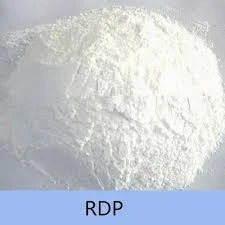
Out . 13, 2024 12:49 Back to list
Understanding Hydroxyethyl Cellulose and Its Applications in Various Industries
What is Hydroxyethyl Cellulose?
Hydroxyethyl cellulose (HEC) is a unique and versatile compound derived from cellulose, a natural polymer that constitutes the primary structural component of plant cell walls. HEC is a white, odorless powder that is soluble in cold water, forming a clear, viscous solution. This biopolymer is widely used in various industries due to its beneficial properties, making it an essential ingredient in many formulations.
Chemical Structure and Properties
Hydroxyethyl cellulose is produced by the etherification of cellulose with ethylene oxide. This reaction introduces hydroxyethyl groups (-OCH2CH2OH) into the cellulose molecule, enhancing its solubility in water and modifying its rheological properties. HEC is characterized by its non-ionic nature, making it compatible with a wide range of substances, including salts, surfactants, and other polymers. The degree of substitution of hydroxyethyl groups affects the viscosity and solubility of HEC, allowing for various grades and specifications to be tailored for specific applications.
Applications in Various Industries
1. Pharmaceutical and Personal Care HEC is commonly found in pharmaceutical formulations, where it acts as a thickening agent, binder, and stabilizer for suspensions and emulsions. In personal care products, such as lotions, creams, and shampoos, HEC is utilized to improve the texture and consistency of these formulations. Its ability to retain moisture and enhance the spreadability of products makes it particularly valuable in the cosmetics industry.
2. Food Industry In the food sector, hydroxyethyl cellulose serves as a thickening agent, stabilizer, and emulsifier. It is often used in sauces, dressings, and dairy products to improve viscosity and texture while maintaining a stable emulsion. Furthermore, HEC is recognized for its low calorie content, making it an attractive ingredient for fat replacers in low-fat and reduced-calorie food products.
what is hydroxyethyl cellulose

3. Construction and Building Materials HEC plays a crucial role in the construction industry, particularly in the formulation of cement-based products like mortars and plasters. Its water-retention properties help prevent the rapid evaporation of moisture during the curing process, resulting in improved adhesion and workability. HEC also enhances the flow characteristics of these materials, making them easier to apply and manipulate.
4. Agricultural Applications In agriculture, hydroxyethyl cellulose is utilized as a thickener in agrochemical formulations. It improves the adhesion of pesticides and herbicides to plant surfaces, enhancing their effectiveness. Additionally, HEC is used in seed coatings to ensure even distribution and protection of seeds during planting.
Safety and Environmental Considerations
One of the significant advantages of hydroxyethyl cellulose is its non-toxic and biodegradable nature. It is generally recognized as safe (GRAS) by regulatory agencies like the US Food and Drug Administration (FDA) for use in food and pharmaceutical products. However, like any chemical substance, proper handling and usage instructions should be followed to ensure safety and efficacy.
HEC's biodegradability makes it an environmentally friendly alternative to synthetic polymers, contributing to sustainable practices in various industries. Its natural origin and ability to be used in formulations that require lower environmental impact have garnered attention in the search for more sustainable product development.
Conclusion
Hydroxyethyl cellulose is a versatile and essential ingredient in a wide range of applications, spanning pharmaceuticals, personal care, food, construction, and agriculture. Its unique properties, including solubility in cold water, thickening ability, and compatibility with various substances, make it a favored choice for formulators and manufacturers. As industries continue to seek sustainable and effective solutions, HEC stands out as a valuable biopolymer that meets these demands while offering safety and environmental benefits. Whether in the form of a cream, a food product, or a construction material, hydroxyethyl cellulose plays a critical role in enhancing the quality and performance of everyday products.
-
Versatile Hpmc Uses in Different Industries
NewsJun.19,2025
-
Redispersible Powder's Role in Enhancing Durability of Construction Products
NewsJun.19,2025
-
Hydroxyethyl Cellulose Applications Driving Green Industrial Processes
NewsJun.19,2025
-
Exploring Different Redispersible Polymer Powder
NewsJun.19,2025
-
Choosing the Right Mortar Bonding Agent
NewsJun.19,2025
-
Applications and Significance of China Hpmc in Modern Industries
NewsJun.19,2025







